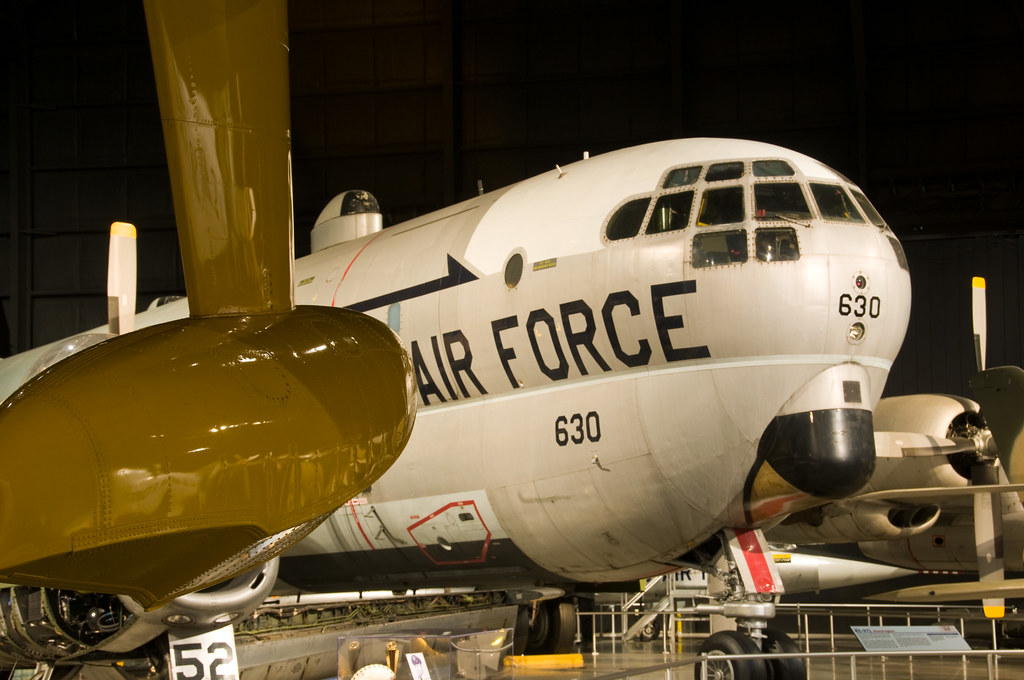

Boeing KC-97 Stratotanker
The USAF began operating the KC-97 in 1950. These tankers were vitally important to the world-wide B-47 Stratojet strategic operations. An example is the support of Arctic reconnaissance flights from Thule Air Base. While it was an effective tanker, the KC-97's slow speed and low operational altitude complicated refueling operations with jet aircraft. B-52s typically lowered their flaps and rear landing gear to slow the aircraft enough to refuel from the KC-97. In addition, a typical B-52 refueling engagement profile would involve a descent that allowed the aircraft pair to maintain a higher airspeed (220-240 knots). In the early 1960s, TAC added J-47 jet pods from retired KB-50 tankers to produce the KC-97L. The jet pods increased performance and made the KC-97 more compatible with jet aircraft. In 1956, SAC began phasing out the KC-97 in favor of the KC-135.
The aircraft on display supported active duty USAF and NATO units in Europe, and on June 7, 1973, the mayor of Zeppelinheim, a town near Rhein-Main Air Base in West Germany, christened this aircraft in his town's honor. The Zeppelinheim was flown to the museum in August 1976.

No comments:
Post a Comment